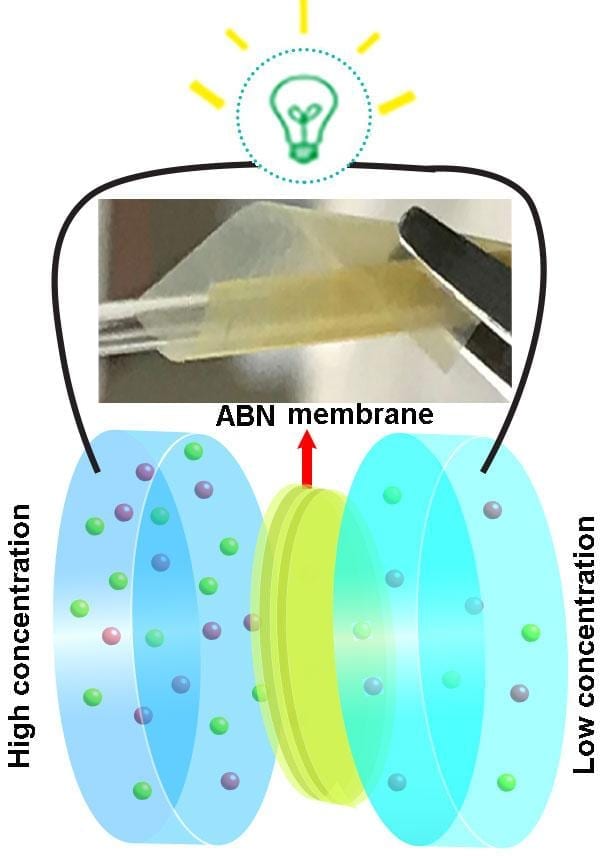
A research team at American University of Sharjah (AUS) has made an important breakthrough in energy harvesting technology that can benefit many sectors, from bio-medicine to construction.
The device works by harnessing electromagnetic radiation from different sources and then reusing it to energize low-power circuits.
Potential uses of the technology include being placed in a medical chip that measures blood sugar levels in diabetes patients; powering wireless sensors on bridges, roads and buildings to monitor structural safety factors; or improving the battery life of mobile phones.
Team members include Dr. Lutfi Albasha, Associate Professor in Electrical Engineering; Dr. Nasser Qaddoumi, Professor and Interim Head of the Department of Electrical Engineering; a full-time research associate and six undergraduate students including three UAE nationals.
“One of the main obstacles present when it came to energy harvesting technology was low efficiency. Despite many innovations in the field, one common problem, in most cases, was that the harvester itself utilized most of the collected energy,” Dr. Albasha commented.
Typically, harvesters would provide 5 percent efficiency. However, the AUS team was able to minimize its harvester’s energy consumption and to raise efficiency to more than 80 percent. Launched in 2011, the project is set to have its final testing soon.
Sponsored by Semiconductor Research Corporation (SRC) and Mubadala Technologies Company, the AUS team taped-out a chip using Global Foundries 65 nanometer advanced analog CMOS process. The chip comprises dedicated harvester circuits with very high conversion efficiencies.
In addition, the team was also equally successful in designing a novel wide-band antenna for the same system. “The antenna, reported to be the smallest and best-in-class, is very small and enjoys a wide frequency bandwidth. Tests have shown that this flat antenna can pick up signals from mobile phones, TV signals and even Wi-Fi and toll systems at 5GHz,” said Dr. Qaddoumi.
Read more: AUS research team makes a breakthrough in energy harvesting technology
The Latest on: Energy harvesting
[google_news title=”” keyword=”Energy harvesting” num_posts=”10″ blurb_length=”0″ show_thumb=”left”]
via Google News
The Latest on: Energy harvesting
- Exploiting disorder to harvest heat energy: The potentialities of 2D magnets for thermoelectric applicationson April 30, 2024 at 9:20 am
Thermoelectric systems are a green and sustainable way to harvest energy from any form of heat that otherwise would be wasted. At the core of this energy conversion process is the so-called Seebeck ...
- What’s that?…A fuel cell that harvests energy from…dirt?on April 26, 2024 at 7:10 am
A soil microbial fuel cell where microbes in dirt could power applications which are literally “in the field”.
- Saudi Arabia Energy Harvesting System Market Focus Group Alchemy Transforming Conversations into Strategic Goldon April 25, 2024 at 6:22 am
Request To Download Free Sample of This Strategic Report @ https://reportocean.com/industry-verticals/sample-request?report_id=SA1478 The report covers market ...
- This salt battery harvests osmotic energy where the river meets the seaon April 24, 2024 at 10:55 am
Estuaries -- where freshwater rivers meet the salty sea -- are great locations for birdwatching and kayaking. In these areas, waters containing different salt concentrations mix and may be sources of ...
- Energy Harvesting System Market Poised for Remarkable Growth, Projected to Reach USD 1317.56 Million by 2031on April 24, 2024 at 9:48 am
The Energy Harvesting System Market demonstrated a robust valuation of USD 638.86 million in 2023. It is projected to experience substantial growth, reaching USD 1317.56 million by 2031. This growth ...
- Revolutionizing Renewable Energy: Innovative Salt Battery Efficiently Harvests Osmotic Poweron April 24, 2024 at 5:00 am
A new semipermeable membrane doubles the osmotic energy output in estuaries, showing potential for sustainable power generation. Estuaries — where freshwater rivers meet the salty sea — are great ...
- Silicon Labs unveils wireless SoCs for energy harvestingon April 23, 2024 at 7:40 am
Silicon Labs introduces its first and most energy-efficient wireless SoCs for developing energy-harvesting devices.
- Silicon Labs’ latest wireless SoCs come with energy harvesting-ready capabilitieson April 23, 2024 at 2:48 am
Silicon Labs has announced the launch of the xG22E family of Wireless SoCs, the company’s first-ever family of devices that have been designed to operate within the ultra-low power envelope required ...
- “Drinking Bird” Becomes an Evaporation-Driven Triboelectricity Energy Harvesteron April 22, 2024 at 9:42 am
Researchers combined the drinking bird toy with a triboelectric arrangement to create a high-voltage energy-harvesting scheme.
- Silicon Labs Streamlines Energy Harvesting Product Development for Battery-Free IoTon April 22, 2024 at 5:02 am
Silicon Labs (NASDAQ: SLAB), a leader in secure, intelligent wireless technology for a more connected world, today announced their new xG22E family of Wireless SoCs, Silicon Labs' first-ever family ...
via Bing News










